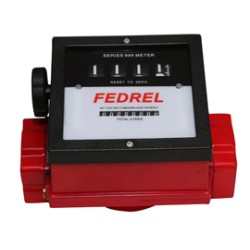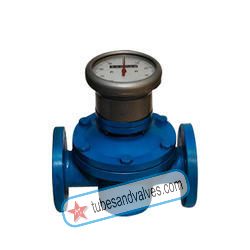Types of Oval Meters
An oval meter is a type of flow meter often used in industrial and manufacturing settings. It functions as a type of flow indicator that measures how much fluid passes through a line in a given period. Most oval meters measure the volume of fluid that has passed through the pipeline in gallons per hour or minute. There are two main types of oval meters, paddlewheel and turbine, each offering distinct benefits and features.Paddlewheel Oval Meters
Paddlewheel oval meters are the oldest and most commonly used type of oval meters. They are made up of a paddlewheel with various blades that rotate when fluid passes through its housing. As it rotates, the paddlewheel interacts with an optical or mechanical sensor. This generates electrical pulses that correspond to the amount of fluid that has passed through the meter. These signals are then relayed to a digital display or used to control other devices connected to the line. In addition to being very reliable and cost-effective, paddlewheel oval meters have a wide range of applications and can be used with a variety of fluids, including oil, water, gas and liquid chemicals.Turbine Oval Meters
Turbine oval meters are a newer type of flow indicator than paddlewheel oval meters, but they are slowly gaining in popularity. Similar to a paddlewheel meter, they are comprised of a turbine rotor and an optical or magnetic sensor. When the rotor rotates, signals are generated and sent to a digital display, or to a computer or other equipment. However, since the turbine rotates at a much higher rate than a paddlewheel, it can generate signals much more quickly, providing more accurate readings and greater control capabilities. This makes them ideal for applications requiring fast and accurate readings, such as turbine engines and fluid pumps.Another benefit of using turbine oval meters is that they require less maintenance than paddlewheel meters. They are also more efficient and can be used with a variety of fluids, including oil, water, gas and liquid chemicals. This makes them more versatile and well-suited for applications where space may be limited, such as microfluidics and applications requiring smaller components.Oval Meter Installation and Maintenance
No matter which type of oval meter you choose, both require proper installation and maintenance in order to work properly. When installing an oval meter, it’s important to carefully read the manufacturer’s installation instructions and follow them precisely. Installing a meter in an improper configuration can lead to inaccurate readings or even damage to the device. Additionally, be sure the meter is installed in an area that is free of dirt and debris and that it has adequate ventilation.Oval meters must also be maintained regularly in order to function properly. This can include checking and replacing any parts that may have worn out, as well as cleaning the meter housing regularly to prevent any obstructions from forming. Additionally, you should check the readings against known values to ensure accuracy and recalibrate the meter as necessary.Conclusion
Oval meters are an essential tool for a wide range of industrial and manufacturing processes, providing accurate and reliable readings for a variety of fluids. While paddlewheel and turbine oval meters are the most common types, each offers different benefits and features that must be taken into consideration when selecting one for a particular application. Regardless of the type of oval meter you choose, proper installation and maintenance are key to ensuring accurate, consistent readings and long-term performance.Oval Meters FAQ
Frequently Asked Questions about Oval Meters
What are Oval Meters?
Oval Meters are a type of flow meter that measure the flow rate of liquids in pipes. They are called "oval" meters because of the shape of the measuring chamber, which is oval in shape.
How do Oval Meters work?
Oval Meters work by using
BRAND: FEDRAL
Model: FOFM
25mm NB Federal Oil Flow Meter
25mm NB Federal Oil Flow Meter
The Basics of the 25mm NB Federal Oil Flow Meter
The 25mm NB Federal Oil Flow Meter is a precision instrument used for measuring the flow of oil within a given system. It provides accurate and reliable meas..
Price INR 0.00
BRAND: FEDRAL
Model: FOGM
50mm NB Federal Oval Gear Oil MeterIn the realm of industrial machinery and equipment, ensuring accurate and efficient measurement of oil flow is crucial. This is where the 50mm NB Federal Oval Gear Oil Meter comes in. This oil meter is a reliable and precise instrument that measures the flow rate..
Price INR 0.00
BRAND: FEDRAL
Model: FOGM
An 80mm NB Federal Oval Gear Oil Meter is a high precision measuring instrument that is designed for highly accurate flow measurement of a wide variety of oils and similar low viscosity fluids. It is a compact and robust meter that is capable of delivering extremely accurate readings even in harsh a..
Price INR 0.00
BRAND: FEDRAL
Model: FOGM
A 100mm NB Federal Oval Gear Oil Meter is a highly accurate and reliable measurement device designed for measuring the flow of oils and other viscous liquids. It is widely used in various industries, such as oil and gas, chemical, food, and pharmaceuticals.The 100mm NB Federal Oval Gear Oil Meter ..
Price INR 0.00
Showing 1 to 4 of 4 (1 Pages)













































